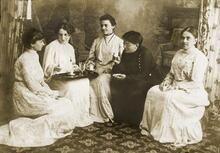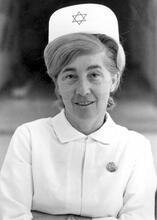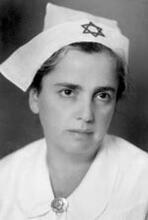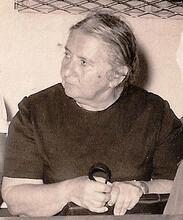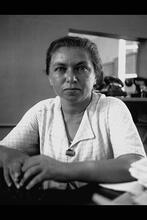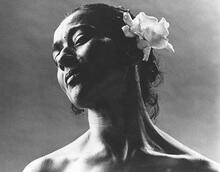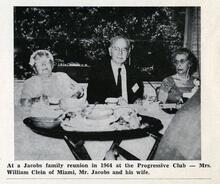Moshavah
The moshavah was the pioneer settlement type of the Jews in Palestine. It was based on private ownership of the land, single-family based agricultural homesteads, and free patterns of marketing, consuming, and economic organization. Between 1882 and1914, the moshavah was the dominant type of Jewish settlement in Palestine. Women in the moshavot can be broken down into five categories: the invisible majority (wives of male settlers), the independent settlers (who ran independent homesteads), powerful women (who strengthened their male partners), professional women (who had accredited professional training), and creative women (who actively participated in the revival of Hebrew culture.
The last few decades have seen considerable changes in the historiography of the First Lit. "ascent." A "calling up" to the Torah during its reading in the synagogue.Aliyah period (1881-1903), which have presented different views of the period, cast new light on it, and brought about a new understanding of the developments in settlement that occurred at the time. As a result, the view of the role of the moshavah (the Hebrew version of what is known world-wide as a village) in the history of land settlement underwent a complete change from. Similarly, the roles played by both Baron Edmond James de Rothschild’s administration and the ICA (Jewish Colonization Association) are now perceived differently from the traditional views of historical memory. A better-founded and more balanced picture emerged as the result of an understanding of the respective roles of private and public capital in the process of modernization, settlement, and land purchase. Parallelly, a significant advance to preserve heritage sites in Israel familiarized the general public to the impressive physical appearance of the moshavot: their planning, architecture, and street patterns. Some of the moshavot became a goal of regular inner tourism and recreation, increasing the interest in their history.
This new look at the First Aliyah includes significant research on women and gender perceptions. Many recent studies have focused on the female “voice” and women’s views of this immigration. Such research has met two important criteria of the gender studies paradigm: first it adds to existing knowledge by presenting new material that emphasizes women’s participation in the development of the Jewish Jewish community in Palestine prior to the establishment of the State of Israel. "Old Yishuv" refers to the Jewish community prior to 1882; "New Yishuv" to that following 1882.Yishuv with all its characteristics; and secondly, it complements the first criterion by further stressing the traditional exclusion of females in the historiography of the period.
The last few decades have seen considerable changes in the historiography of the First Lit. "ascent." A "calling up" to the Torah during its reading in the synagogue.Aliyah period (1881-1903), which have presented different views of the period, cast new light on it, and brought about a new understanding of the developments in settlement that occurred at the time. As a result, the view of the role of the moshavah (the Hebrew version of what is known world-wide as a village) in the history of land settlement underwent a complete change from. Similarly, the roles played by both Baron Edmond James de Rothschild’s administration and the ICA (Jewish Colonization Association) are now perceived differently from the traditional views of historical memory. A better-founded and more balanced picture emerged as the result of an understanding of the respective roles of private and public capital in the process of modernization, settlement, and land purchase. Parallelly, a significant advance to preserve heritage sites in Israel familiarized the general public to the impressive physical appearance of the moshavot: their planning, architecture, and street patterns. Some of the moshavot became a goal of regular inner tourism and recreation, increasing the interest in their history.
This new look at the First Aliyah includes significant research on women and gender perceptions. Many recent studies have focused on the female “voice” and women’s views of this immigration. Such research has met two important criteria of the gender studies paradigm: first it adds to existing knowledge by presenting new material that emphasizes women’s participation in the development of the Jewish Jewish community in Palestine prior to the establishment of the State of Israel. "Old Yishuv" refers to the Jewish community prior to 1882; "New Yishuv" to that following 1882.Yishuv with all its characteristics; and secondly, it complements the first criterion by further stressing the traditional exclusion of females in the historiography of the period.
The moshavah was the pioneer settlement type of the Jews in Palestine. It was based on private ownership of the land, single-family based agricultural homesteads, and free patterns of marketing, consuming, and economic organization. Cooperation or collectivity, such as characterized the Cooperative smallholder's village in Erez Israel combining some of the features of both cooperative and private farming.moshav or A voluntary collective community, mainly agricultural, in which there is no private wealth and which is responsible for all the needs of its members and their families.kibbutz, existed only voluntarily and was not compulsory. Between 1882 and 1914, the moshavah was the dominant type of Jewish settlement in Palestine: about thirty moshavot and other similar settlements included some 12,000 out of 12,500 Jewish rural settlers, while only one or two A voluntary collective community, mainly agricultural, in which there is no private wealth and which is responsible for all the needs of its members and their families.kevuzot existed and as yet not even one cooperative moshav.
Women’s status on the moshavot corresponded to the following typology:
- The “invisible” majority: wives of settlers, who bore the burden of housekeeping and assisting the farmer in daily chores and educating the children;
- The “independent settlers”: women who ran independent homesteads, whether by farming or by offering services;
- “Powerful women”: those who stood beside their partners and strengthened them by their own initiative and drive;
- Professional women: those who had accredited professional training (teachers, nurses, physicians, etc.); and
Creative women: those who actively participated in the revival of Hebrew culture in the country.
The "Invisible" Majority
Most of the farmers’ wives fall into this group, whose burden was divided between housework, agriculture, and childcare. Literature and first-person accounts of this group are few because these women left almost no writings of their own and remained largely anonymous.
A little about these women’s lives, fates, and hard labor may be gleaned from moshavot anniversary books, for which personal recollections were required. Thus we know of the trials of the first women in Haderah, who buried husbands and children, and the exhausting daily routine of the women in various agricultural settlements in the Galilee.
These women undertook many and varied tasks. The various pioneer groups that came to the “settling sites” included women who came to help with cooking, laundry, and maintenance of the huts or shacks in which the first settlers lived. In Zikhron Ya’akov, women were among the first groups that alternated every few weeks; only one woman went to Gederah; and those who lived in the meager lean-tos in Yesud ha-Ma’alah included women who for many years dwelled in dire poverty with their husbands. One woman was among the three people who came to Hartuv to clean the first dwelling building, and it was the same in each of the other “aliyot” to the settlements.
As the settlements became more firmly established, women provided the solid basis for family life, which was the most important social basis in this kind of settlement. This found expression in housework, work in the farmyard, childcare, and supervision of various jobs performed by laborers. It is not difficult to imagine the magnitude of the change women experienced in their lives when they arrived in Palestine from countries where they had enjoyed many of the conveniences of the modern home. After all, many families came from cities and towns in which modern services already operated, commerce was developed, and the physical infrastructure included railroads and improved sanitation. The new immigrants came primarily from the petit bourgeoisie, and women from this developing world found themselves on barren hilltops, cut off and inaccessible, on shifting sands, in settlements without paving, stores, or running water, in a country with a harsh and unfamiliar climate, wracked by disease and other dangers.
Under these conditions, which involved sacrificing everything they had hitherto known, they bore their gray, everyday burdens heroically and indefatigably. Most of them paid a high price: premature aging, burnout, the sacrifice of the possibility of self-development, miscarriage, deaths of children and spouses—all without knowing whether their sacrifices would bring the longed-for result: building Jewish settlements and villages in Palestine.
The Independent Settlers
A fairly large group of women in the moshavot were in fact settlers in their own right, who acted as heads of families without a man beside them. This type can be divided into two: widows and farm owners.
Widows: The many victims that pioneering in the first moshavot claimed left numerous women as heads of their families, who had to manage their farms or find other sources of income. Haderah had many “swamp widows,” while the administration of Zikhron Ya’akov found an original solution for families in this situation by giving them stores and trading services. In other instances, the widows cried out to the administration for help in supporting their families: for example, the appeal of Mrs. Nahumovsky of Yavne’el, who was left helpless when her husband was killed following an internal quarrel at the Lit. "village." The dominant pioneer settlement type of the Jews in Palestine between 1882moshavah during its very first days. In Kefar Tavor, Widow Kraus ran the household for many years. In all these cases, the burden of housekeeping fell on the widows’ shoulders until their sons were old enough to help.
Farm Owners: These were women who arrived in Israel with their sons and daughters, with the aim of running their own farms. In the southern moshavot, women such as Batia Makov and Golda Miloslavsky, who became shining examples for their generation, stood out. Batia Makov was a Polish businesswoman who joined the Menuhah ve-Nahalah movement, left her home and husband, and came to The Land of IsraelErez Israel alone with the first settlers of Rehovot. There she established her own farm and nurtured a generation of settlers on her own. Her household and farm were on the whole well established, and the founders of the moshavah willingly heeded her advice in discussions on the desired direction of development. Nevertheless, Batia Makov could not be elected to office in the moshavah, since such liberal ideas as women’s suffrage had not yet arrived even there.
Golda Miloslavsky (1853–1907) arrived in Palestine as a widow and bought an estate in Nes Ziyyonah. One of the first settlers there, she and her son-in-law ran a farm there to the end of her life. Hayyim Hissin (1865–1932) describes her as follows:
I was amazed by the few settlers in this tiny settlement, who tenaciously fight the crabgrass. A lean old woman with sunken cheeks and a sharp nose and sparkling, alert eyes ran hither and thither among the workers. She was a widow … and once she had saved up two or three thousand after her husband’s death, she intended to buy a small plot of land in the country. She had already invited her daughter and son-in-law and they too were in the field. Still, she did not rely upon them but supervised everything herself, running from worker to worker, gathering the pulled-up weeds in a basket. It was a wonder that such a withered body could stand on its feet at all. (Haim Hissin, Journey in the Promised Land, 1982)
In time, one of the terrible things she experienced was the death of her youngest son. With no doctor nearby, she ran through the sand all the way to Rishon le-Zion with the child in her arms, hoping to revive him.
Another farm owner—though not on a moshavah—was Sarah-Itta Fellman (1861–1936), whose husband Dov died in 1884, immediately on arrival in Erez Israel and after they had settled in Sumeil, near Jaffa (today in the center of Tel Aviv). She raised her children, ran the household by herself until her children were able to help her, and did not abandon “Pardes Fellman” when she found herself alone, having to deal with the daily burden in a completely strange environment.
This scenario repeated itself on the moshavot in the Galilee, where women in Yesud ha-Ma’alah, Rosh Pinnah, and Mishmar ha-Yarden ran the family farms with the help of their adult children. In the lower Galilee, women stood out as an important component of the family farms because the second generation was now settling in the moshavot, including women who were accustomed to agricultural work or had been trained in it and could supervise complicated tasks not only in their yards but also in the fields at harvest or fruit-picking time. They did this while raising their children and running their households. Their contribution proved important to the great success of family farms in the lower Galilee moshavot, mainly in the tenancy system used there.
Powerful Women
A unique type of woman stood out among the settlers and thereby rated some attention in literature, since they supported their husbands in settlement activity and did not hesitate to influence them and encourage them when times became difficult. One of the better-known of these was Olga Belkind-Hankin, the wife of Yehoshua Hankin (1854–1945). A midwife by profession, she took things in hand upon the arrival of Vladimir Tiomkin (1861–1927) and the ensuing crisis of land purchase. Not only did she urge Hankin to take risks by buying land in Rehovot, but also, as many businesses failed when the crisis erupted, she pushed to complete the purchases of areas such as Haderah and helped her husband stabilize his business dealings.
A similar case was Feige Lehrer, the wife of Reuven (1833–1917), who founded the farm in Wadi Hanin that later became Nes Ziyyonah. From their arrival in The Land of IsraelErez Israel in 1882 until the settlement of workers nearby in the later 1880s, Feige stood beside Reuven during the hard times of isolation, difficult struggles to keep the independent farm going, and the absence of the living conditions they had been used to on their farm in Russia. For days on end, Feige was left alone in the farm at Wadi Hanin, unwilling to retreat even at times of famine and crisis. Feige kept the household going, and along with Reuven she developed beekeeping, in which they were pioneers, and labored on the farm for many years after his death (she herself lived to the age of 106).
Bertha Feinberg, wife of Yosef (1855–1902), supported her husband in their wanderings and during the difficult time when they had to leave Rishon le-Zion, which they had helped to found. Fanya Feinberg, mother of Avshalom Feinberg (1889–1917), who was co-founder of the Nili pro-British espionage group in Palestine during World War I, ran her household alone for eleven years. Baila Eisenberg, wife of Aharon (1864–1932), headed the women settlers of Rehovot in their confrontation with the Turkish soldiers who had come to supervise the building of the Lit. "village." The dominant pioneer settlement type of the Jews in Palestine between 1882moshavah. Baila Meller was “the mother of the moshavah” of Mazkeret Batyah. All these women are examples of the strong woman who fought fearlessly for her rights but whom history failed to remember for posterity.
Professional Women
Many farmers’ daughters, who arrived in the country at various ages, received professional training in essential fields such as medicine, pharmacy, and education. In most cases, Baron Rothschild’s administration helped by sending the women to Europe for training. In some cases, the profession, such as midwifery, was passed down from generation to generation. Indeed, it is hard to imagine daily life on the Lit. "village." The dominant pioneer settlement type of the Jews in Palestine between 1882moshavah without midwives, kindergarten teachers, schoolteachers, medics, and pharmacists. Only a few are known from the literature about this period; most have remained anonymous. Mili Hochberg, known as “the saint,” was from Nes Ziyyonah, but when her husband’s crop and her own failed, she supported the family as a medic in Mikveh Israel and even traveled to the United States for additional training in the field—but committed suicide there. Naomi Shapira came from Zikhron Ya’akov to Kinneret and worked with Hefetz, a medic and pharmacist. The diary she left is a rich source of information about daily life in the moshavot and in the A voluntary collective community, mainly agricultural, in which there is no private wealth and which is responsible for all the needs of its members and their families.kevuzot that worked at Kinneret.
The schoolteachers and kindergarten teachers are better known. They took upon themselves one of the most difficult jobs in the national revival enterprise other than settling the land: the task of teaching Hebrew as a day-to-day language to the young generation on the moshavot. Much has been written about these teachers, and names like Epstein, Gur, Vilkomitch, Ehrlich, Antebi, and Yudilovitch are known as the foundation stones of Hebrew education in The Land of IsraelErez Israel. But no less active in teaching and education were Hannah Drobin of Rishon le-Zion, Mina Fuchs of Ekron, Dinah Grinker of Petah Tikvah, Elisheva Bassvitch of Metullah, and Marie Koffman of Zikhron Ya’akov. The latter’s arrival at the moshavah and her appointment as school principal caused the resignation of the writer and teacher Ze’ev Ya’avetz, who could not bear the idea of such sacrilege as a woman teaching.
The first Hebrew kindergarten teacher in Rishon le-Zion, Esther Shapira, was educated at the Evelina de Rothschild school in Jerusalem. Elisheva (Gissin) Efrat worked with her briefly before taking a job first in Petah Tikvah and then in Jerusalem. Other kindergarten teachers whom she trained were Yehudit Harrari of Rehovot, Shifrah Kumarov of Nes Ziyyonah, and Leah Mazeh of Tel Aviv. In 1911, a group of kindergarten teachers who had trained in the Pestalozzi-Fröbel system in Berlin returned to the country: Sarah Epstein, Temima Sokhovolsky, Tirza Katinka, Haya Broide, Shulamit Flaum, and Hasya Sukenik-Feinsod. They laid the foundations of the Hebrew kindergarten and made an enormous contribution to the development of a revived Hebrew culture throughout the Jewish community in Palestine prior to the establishment of the State of Israel. "Old Yishuv" refers to the Jewish community prior to 1882; "New Yishuv" to that following 1882.Yishuv.
The following women became well known in midwifery and medicine: Olga Belkind-Hankin, Fanya Belkind, Sarah Silberman of Petah Tikvah, and Dr. Esther Ginsburg (the sister of Ahad Ha-Am, 1856–1927), who worked in Haifa and also took care of members of the moshavot.
Thus, on the moshavot and in the social circles connected to them there developed a unique class of women who engaged in the free professions and whose economic status was unaffected by their marital status. Their work, usually as salaried employees, allowed them to establish themselves on their own, move freely from place to place, and develop their personalities as they saw fit. In this way they were very different from the rest of the women of the moshavot.
Creative Women
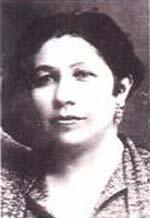
Esther Raab (1894–1981), Israel's first "native" woman poet, was born into one of the founding families of one of the first agricultural settlements in Eretz Israel. Born in Petah Tikvah, she later lived in Cairo, then Paris, finally settling in Tel Aviv, where her home became a center for writers and painters.
Institution: Kean University, New Jersey
A small group of moshavot women laid the foundations for the revival of Hebrew culture, particularly literature, and were active even in the earliest days of settlement. Considerable literary and historical analysis exists of their work, revealing that the work of Nehama Pukhachewsky, Yehudit Harrari, Hannah Barnett, and Esther Raab reflect the revival of Hebrew culture in the country. Their work provides the research on this period with both its prosaic and poetic aspects, but also excels in describing the discrimination against women and their inferior status at the time.
The women of the Lit. "village." The dominant pioneer settlement type of the Jews in Palestine between 1882moshavah were not, therefore, a homogeneous and anonymous composite, made from a single mold to be defined as “the farmer’s wife.” They performed varied activities, even if most have disappeared among the generalizations of historiography on the period. The real image of the woman is reflected precisely in the bright light of her gray daily grind of building the Jewish community in Palestine prior to the establishment of the State of Israel. "Old Yishuv" refers to the Jewish community prior to 1882; "New Yishuv" to that following 1882.Yishuv. Unlike the approach that seeks to gauge women’s accomplishments by political and organizational standards, for example by considering whether they rose to the level of public leadership and visibility, the different “types” of women on the moshavah reflect their practical roles and tasks in building the Yishuv at its very beginning, as well as their essential and important contribution to its success. Because the women’s role was ignored not only in leadership and public representation but also in the general historiography of the Yishuv, it was hard to discern the full impact of women’s function and their contribution to building the Yishuv. The researcher was often dazzled by the exaggerated overemphasis on the few but dominant women activists and tried to project that image onto all the women of the time, thus contributing to the disappearance of other women from the written history of the beginning of the Yishuv. Similarly, the emphasis on the question of women’s equality detracted from research that would provide more basic information about women from which it would be possible to draw conclusions about their functions and their role in the settlement enterprise.
Whoever scrutinizes the development of Jewish settlement and discerns women’s contribution in that field not from a social or political perspective but from that of their practical contribution to the creation taking shape in the country will reach different conclusions. The roles and activities of many women reveal the practical, day-to-day reality of the time, enabling us to see a fabric of settlement in which women play a decisive role due to their ability to withstand the difficult tests of settling down under the country’s harsh conditions. Their share in the project finds expression in the simple support they gave to their husbands, in shouldering the burden of housework and farmyard, raising and educating the children, and performing a long series of vital professional tasks in teaching, medicine, and the services.
Perseverance, keeping the home and family life going, and raising the next generation—all these fell upon the shoulders of women in the moshavah. The test of settlement lay not in political or business leadership but in daily life, steadfastness, holding onto what existed under severe conditions—things that could not have been accomplished if not for the women.
Women added farm work and professional skills to their other tasks, which allowed them to participate actively in achieving the most exalted goal of rural Zionist settlement at its outset: the creation of a new Jew, who lives on the land and derives his or her livelihood from it. Not only were women in the moshavah herself such new human beings, and not only did they themselves participate in the general pioneering enterprise, but they became the rearer and shaper of a new generation, a generation of farmers and Jewish workers of the land in The Land of Israel>Erez Israel.
Research Development
In recent years, two main channels of research on the moshavah have developed: social and everyday life in the moshavah, and gender studies based mainly on analyzing the literature of some of the abovementioned creative women. Both channels contributed to better understanding the social facets of the moshavah, and the role of women in the creation of this settlement form. Studies on everyday life enhanced the significant contribution of women to the resilience of the moshavot and to the shaping of the second generation of the New Type of the Hebrew farmer, Boaz, as defined by Ahad Ha-Am. Extensive use of literature of the First Aliyah women brought about a new perspective on the second generation of women in the moshavah, the farmer’s daughters (Bat Ha-Ikar). They had an important role in bridging the gap between the farmers and the negative attitude the workers of the Second Aliyah held towards them.
Aaronsohn, Ran. “Women and Everyday Life at the Beginning of the Jewish Settlement in Erez Israel.” Proceedings of the World Jewish Studies Congress 10 (B), Jerusalem: 1989, 305–311.
Berlowitz, Yaffa, ed. Stories by Women of the First Aliyah. Tel Aviv: Tarmil, 1984. [Hebrew]
Ben-Artzi, Yossi. “Between Farmer and Laborer: Women in Early Jewish Settlements in Palestine 1882–1914.” In A Window onto Women’s Lives in Jewish Communities, edited by Yael Azmon, 309–324. Jerusalem: Zalman Shazar Center, 1995. [Hebrew]
Ben-Artzi, Yossi. “Have Gender Studies Changed Our Attitude towards the Historiography of the Aliyah and Settlement Process?” In Jewish Women in the Yishuv and Zionism: A Gender Perspective, edited by Margalith Shilo, Ruth Kark, and Galit Hassan-Rokem, 26–44. Jerusalem: 2001. [Hebrew]
Gofer, Gilat. “’The Most Appropriate Element to be Farmers Wives’ and Women Agriculture Workers’: Zionist Womanhood in the Moshavot during the Second Aliyah,” in Israel: Studies in Zionism and the State of Israel, 2004 (5), 123-150.
Shilo, Margalit. “Contribution of Women in the First Aliyah to Agriculture and Hebrew Education.” Contemporary Jewry 9 (1995): 121–147.
Shilo, Margalit. “Gender approach to the First Aliyah according to Hannah Trager Tales”Iyunim be-Tekumat Israel, 2005 (15), 147-179. [Hebrew]
Smilansky, Moshe. Family of the Land. Tel Aviv: 1943.



